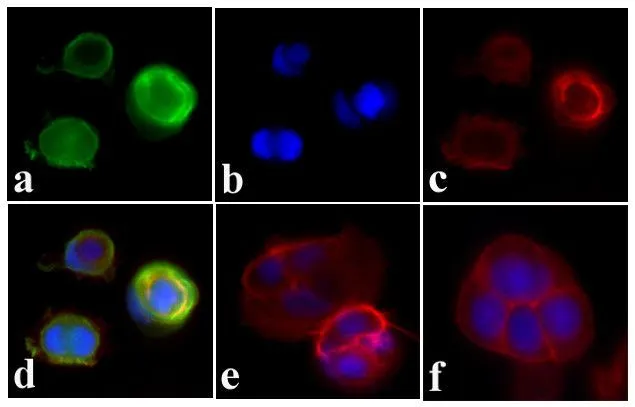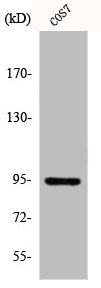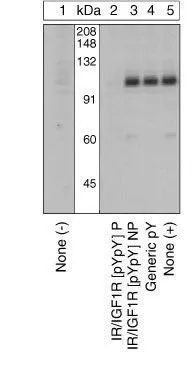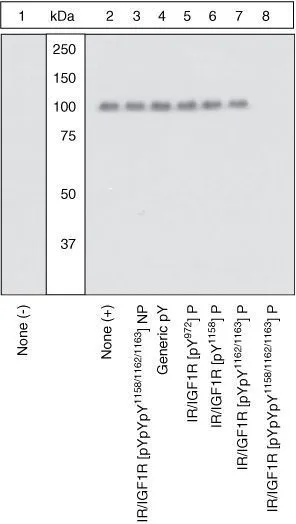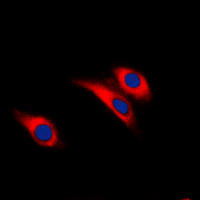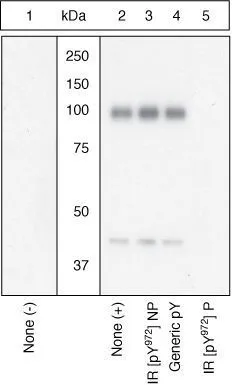
WB (peptide competition) analysis of CHO-T cells transfected with an insulin receptor-containing vector and stimulated with 50 nM insulin for 5 minutes (Lane 2-5) using GTX25678 Insulin Receptor beta (phospho Tyr960) antibody prior incubated with the non-phosphorylated peptide corresponding to the phosphopeptide immunogen (Lane 3), a generic phosphotyrosine-containing peptide (Lane 4), or the phosphopeptide immunogen (Lane 5). The data show that only the immunogen phosphopeptide blocks the signal, demonstrating the specificity of the antibody.
Insulin Receptor beta (phospho Tyr960) antibody
GTX25678
ApplicationsImmunoFluorescence, Western Blot, ImmunoCytoChemistry
Product group Antibodies
TargetINSR
Overview
- SupplierGeneTex
- Product NameInsulin Receptor (phospho Tyr960) antibody - Orthogonal Validated
- Delivery Days Customer9
- Application Supplier NoteICC/IF: 1:100-1:500. *Optimal dilutions/concentrations should be determined by the researcher.Not tested in other applications.
- ApplicationsImmunoFluorescence, Western Blot, ImmunoCytoChemistry
- CertificationResearch Use Only
- ClonalityPolyclonal
- ConjugateUnconjugated
- Gene ID3643
- Target nameINSR
- Target descriptioninsulin receptor
- Target synonymsCD220, HHF5, insulin receptor, IR
- HostRabbit
- IsotypeIgG
- Protein IDP06213
- Protein NameInsulin receptor
- Scientific DescriptionThis gene encodes a member of the receptor tyrosine kinase family of proteins. The encoded preproprotein is proteolytically processed to generate alpha and beta subunits that form a heterotetrameric receptor. Binding of insulin or other ligands to this receptor activates the insulin signaling pathway, which regulates glucose uptake and release, as well as the synthesis and storage of carbohydrates, lipids and protein. Mutations in this gene underlie the inherited severe insulin resistance syndromes including type A insulin resistance syndrome, Donohue syndrome and Rabson-Mendenhall syndrome. Alternative splicing results in multiple transcript variants. [provided by RefSeq, Oct 2015]
- Storage Instruction-20°C or -80°C,2°C to 8°C
- UNSPSC12352203
References
- Exercise Counterbalances Rho/ROCK2 Signaling Impairment in the Skeletal Muscle and Ameliorates Insulin Sensitivity in Obese Mice. Munoz VR et al., 2021, Front ImmunolRead more
- The expression and significance of insulin-like growth factor-1 receptor and its pathway on breast cancer stem/progenitors. Chang WW et al., 2013 May 12, Breast Cancer ResRead more

